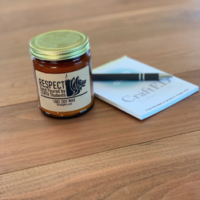How to Teach Entrepreneurship as Project-Based Learning Curriculum
By Dr. Jenny Pieratt
Crafting a business from scratch is a rewarding endeavor that fosters essential skills for the 21st century. While an entrepreneur is typically profiled as an established business mogul, students are changing the status quo by launching businesses from as early as kindergarten through 12th grade. As more and more startups are booming nationwide, schools have tapped into the value of empowering students to initiate, manage or lead local enterprises. From thriving soap business to car washes to candle companies, students are contributing to their local landscapes all while building their skills in research, planning, financial management, negotiation and communication– all while fostering a tight knit learning community.
Why Teach Entrepreneurship?
Teaching entrepreneurship educates students how to think outside of the box and helps broaden their view of the world; core entrepreneurial skills such as critical thinking, design thinking as well as financial literacy can be tied to existing pedagogy and serve as powerful reinforcements as students engage in rigorous, project-based learning curriculum as well.
The experience of initiating or simulating a real business in a safe, mentored environment inspires students to explore existing passions, discover potential strengths, and potentially identify their own future start-up possibilities. This is the case for student Matthew Richardson of Central Coast New Tech who, given the chance to run a real start-up business under teacher supervision, discovered how to apply his graphic design interest into a successful candle-making business. Jennifer Stillittano, teacher at Central Coast New Tech, stresses how entrepreneurship “foster(s) a strong sense of agency and collaboration” between the students, and has shown increased interest and participation in their learning.
Financially Responsible Students Become Financially Smart Adults
In order to create a successful business, it is important to understand basic financial literacy. As math class is often deemed boring and theoretical by students, with little application to everyday life, learning math through entrepreneurial training helps students gain a deeper appreciation for the practical application of math. For instance, the Wicked Soap Company, an initiative started by a 10th grade class at High Tech High, describe their founding students as “young stakeholders” who “are responsible for every aspect of the design, planning, creation, packaging, sales and proceeds.” Developing these financial skills enable students to understand the weight of responsible economic decisions, in business, and even more so in their personal, day-to-day life.
Incorporating Entrepreneurship in Existing Curriculum
So how do we incorporate entrepreneurship into our existing school subjects or project-based learning curriculum? With these CraftED ideas, students can become entrepreneurs no matter the class or competency required. For example, students can replicate writing real business proposals, where they explore persuasive and informational writing with real world application. In Social Studies, students can use the standards to look at how businesses first started in their local communities and how they give back. To improve communication and presentation skills, students may simulate a “Shark Tank” business proposal, where they explore emotional rhetoric, charisma and code-grooming, as well as think critically about sales and marketing tactics. In rehearsing for a sales pitch, students also learn how to effectively provide feedback to their peers in a professional setting. From as early as 2nd grade, students can use Canva templates to create graphics for social media campaigns that help scaffold skills for public exhibitions and showcases. No matter the grade level or subject area, entrepreneurial skill building translates seamlessly to the classroom.
A Return to the Local Community
Student businesses tend to be small and local initiatives aimed at capturing the interest (and economic input) from their direct community. A great example of students giving back to their communities is the student run business Milkweed for Monarchs, initiated by a sixth-grade class at Calavera Hills Middle School. The students hope to re-establish the butterfly population in San Diego by selling milkweed to help stabilize the population of monarch butterflies, whose larvae eat only milkweed. This is a perfect example of how students can fill a felt need in their own community.
While community-based projects can bring positive, long lasting effects on the local economy, teaching entrepreneurship to students in general will similarly spread positive influences lasting a lifetime. By fueling student passions, teaching financial responsibility or encouraging linguistic skill building, the benefits of students’ learning as entrepreneurs is more than evident. Besides, with booming student businesses, knowing where to buy candles for Christmas or soap for birthdays is a no-brainer!

